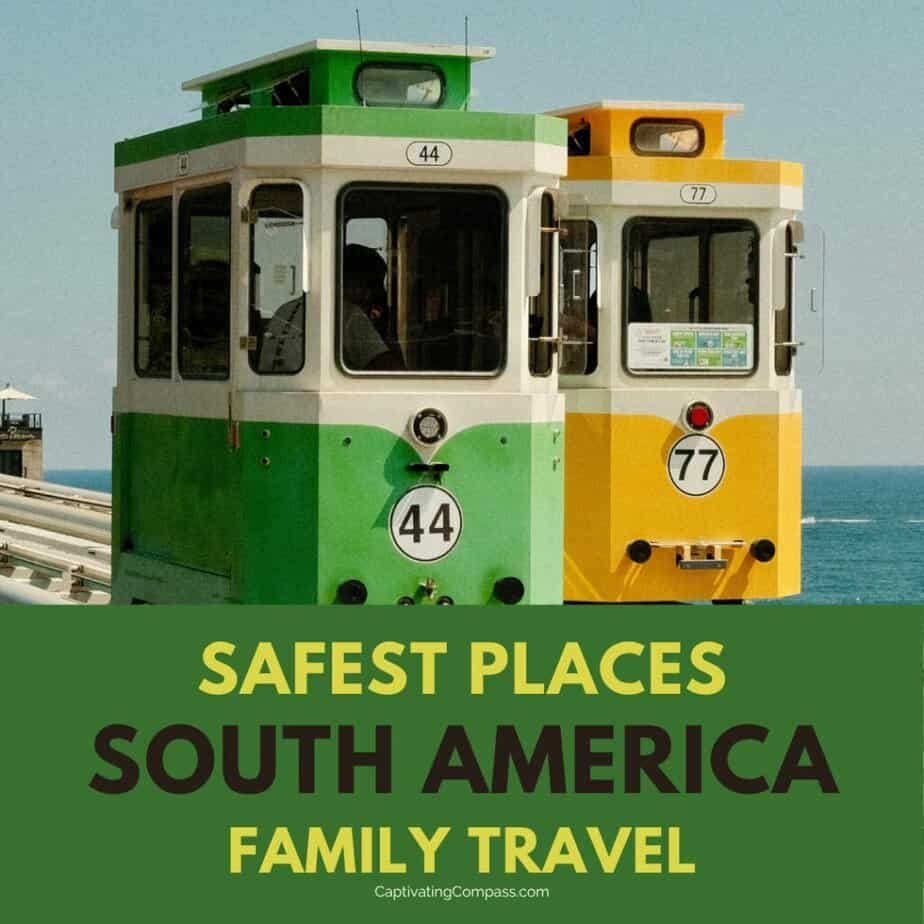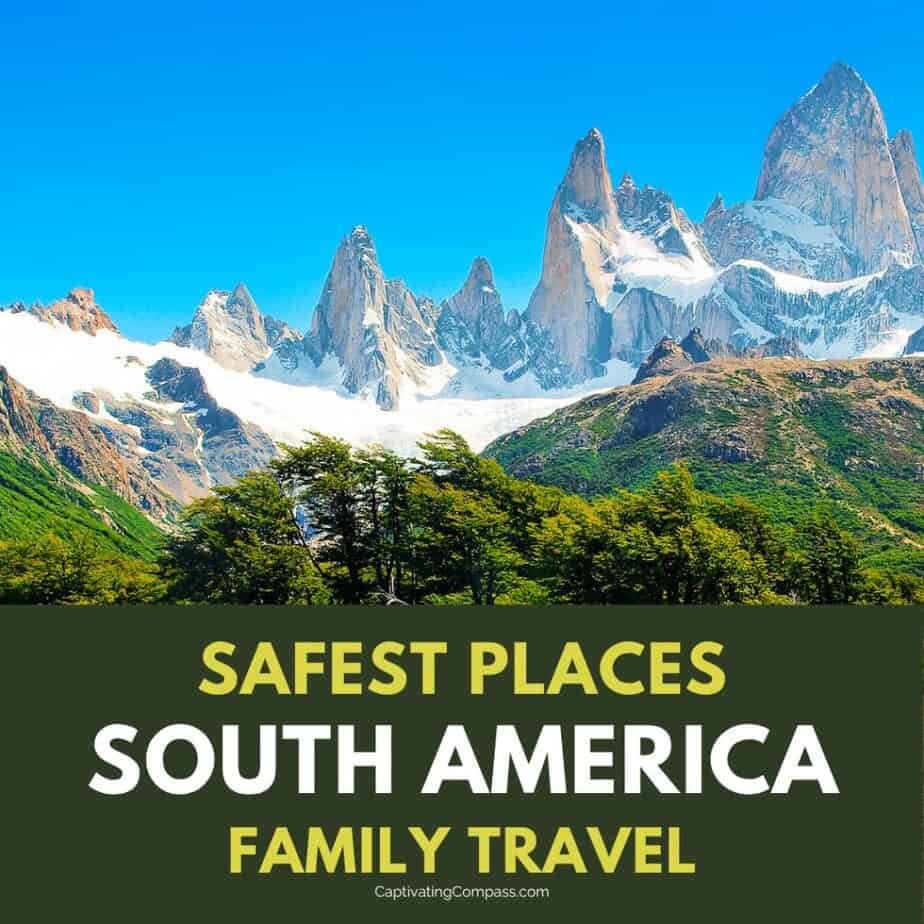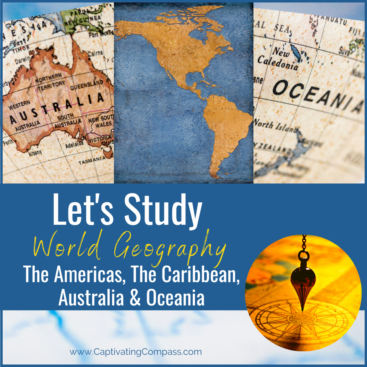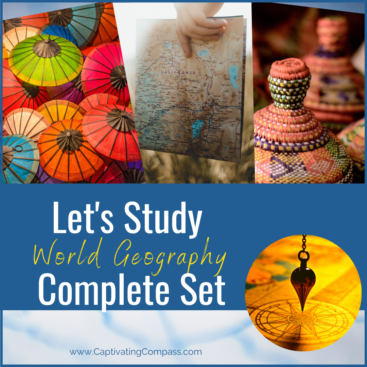
Safest Places to Visit in South America: A Homeschooler’s Paradise
Discovering Educational Opportunities in South America
South America offers a plethora of educational adventures and incredible places to visit, making it one of the safest places to visit. The continent is rich in culture, history, and natural beauty. From the bustling streets of Buenos Aires to the serene landscapes of the Atacama Desert, South America captivates travelers and learners alike. Whether you’re exploring homeschool activities or seeking worldschooling opportunities, this region offers a diverse range of experiences.
With the Global Peace Index highlighting the safest countries within Latin America, there are plenty of secure destinations to explore. These locations not only ensure safety but also provide enriching educational experiences which are always a great option for worldschoolers and homeschoolers on vacation. Major cities like Buenos Aires and La Paz blend modernity with rich historical backgrounds, making them ideal for learning about urban development, culture, and history.
Nature and History: A Perfect Blend
Nature lovers will find South America a dream come true. The continent’s incredible biodiversity is evident in places like the Amazon Rainforest and the Galapagos Islands, making it a perfect place to learn about life science and biology. These UNESCO World Heritage Sites also offer unique opportunities to study ecology and wildlife. The Amazon, with its vast network of flora and fauna, is one of the safest places to discover the wonders of nature.
Historical sites like Machu Picchu and Easter Island provide a window into ancient civilizations. These ancient ruins are not only safe to visit but also perfect for educational exploration. Students and families can delve into the mysteries of the Andes Mountains, learning about the rich heritage of the people who once thrived there.

Relaxation Meets Education
For those seeking both relaxation and learning, South America’s beautiful beaches and national parks present the best places for leisure and education. The pristine shores of Costa Rica invite visitors to understand marine ecosystems and conservation efforts. Similarly, the Atacama Desert offers stargazing opportunities unparalleled anywhere else, making it ideal for astronomy enthusiasts.
Rio de Janeiro, with its vibrant culture and iconic beaches, combines safety with educational experiences. It’s a place where history, culture, and nature blend seamlessly, providing a comprehensive learning environment. Whether exploring the local culture or enjoying scenic beauty, South America’s safest destinations promise enriching adventures for everyone. Each beautiful country below boast unique natural landscapes. I’ve highlighted the best things about these popular tourist destinations that are perfect for home education adventures and worldschooling.
Recommended products
1. Costa Rica: A Natural Classroom
A Safe Haven for Educational Adventures
Costa Rica stands as a beacon of safety in Latin America, frequently ranking high on the Global Peace Index. It is one of the safest countries in South America and offers numerous worldschooling opportunities. Its stable political environment and low crime rates make it one of the safest places to visit in South America. Families looking for homeschool activities can find a treasure trove of nature-based learning experiences here. Costa Rica is not only one of the safest destinations but also a vibrant outdoor classroom where children can learn firsthand about diverse ecosystems.
With its rich biodiversity, Costa Rica is ideal for nature lovers and aspiring scientists. The country is home to several national parks that serve as living laboratories. These parks teach visitors about conservation and the interconnectivity of natural systems. From the coastal rainforests to the highland cloud forests, children can engage in interactive learning experiences. These include observing animal behaviors and understanding plant life cycles. The ease of access to these areas makes Costa Rica one of the best places for educational tourism and unrivaled worldschooling opportunities. The friendly locals, and convenient public transport make it a popular destination
Nature’s Wonders Await
Costa Rica’s geographical diversity serves as a perfect setting for educational adventures. The lush landscapes include everything from beautiful beaches to majestic mountains. Here, students can learn about the country’s unique flora and fauna. These environments support a wide range of activities that are both fun and educational. Children can explore tide pools, snorkel with tropical fish, or hike through dense jungles. These are not just recreational activities but integral parts of a curriculum that teaches about natural ecosystems.
The country is also a haven for those interested in studying volcanic activity. With several active volcanoes like Arenal and Poás, kids can learn about geothermal processes. These natural wonders serve as open-air classrooms, where geological phenomena can be studied in real-time. Visiting these sites offers a hands-on learning experience unmatched by textbooks. It’s not surprising that Costa Rica is among the safest places for families seeking educational enrichment.

Cultural and Historical Riches
Beyond its natural beauty, Costa Rica offers a wealth of cultural experiences. Its rich history is reflected in its vibrant art scene and indigenous communities. Children can participate in cultural workshops that explore local traditions, crafts, and music. These activities help young learners appreciate the cultural tapestry of Latin America, enhancing their global awareness.
For those interested in sustainable living, Costa Rica is a leader in eco-friendly practices. Visiting sustainable farms and eco-lodges allows children to understand the importance of environmental stewardship. These visits provide practical lessons in sustainability and conservation. By immersing themselves in such experiences, children gain a holistic understanding of the world, making Costa Rica one of the best places for educational adventures in South America. Costa Rica is one of the most popular destinations. the firnedly local people, even in rual area, make this one of the top safe countries in South America,
2. Buenos Aires: Culture and History
Vibrant Culture in the Heart of South America
Buenos Aires, Argentina, is a hub of South American culture. Known for its European-style architecture and rich artistic heritage, it is one of the safest places to visit in South America. The city offers worldschooling opportunities with its numerous museums and galleries, perfect for homeschool activities. Families can explore the iconic Teatro Colón, a UNESCO World Heritage site, and one of the best places to experience the local culture. With every corner boasting murals and tango music, Buenos Aires is an ideal destination for cultural immersion. It is a great place for home educating families to spend a few days or a few weeks immersing themselves in the culture and beauty of Argentina.
The city ranks high on the Global Peace Index, making it a safe choice for travelers. Its vibrant neighborhoods, like San Telmo and La Boca, offer a glimpse into the city’s history. Visitors can enjoy street performances, markets, and beautiful museums. Buenos Aires also serves as a gateway to the stunning national parks of Argentina, like Iguazu Falls, making it one of the best places for nature lovers.

Historical Richness and Architectural Wonders
Buenos Aires offers a fascinating journey through history. The city’s architecture reflects its diverse cultural influences. Visitors can admire the neoclassical facades of the Casa Rosada and the grandiose structure of the Buenos Aires Metropolitan Cathedral. These landmarks offer insight into the country’s colonial past and its journey toward becoming one of the safest countries in Latin America.
The city’s educational offerings are exceptional, with many institutions dedicated to preserving history. The Argentine National Historical Museum and the Evita Museum provide engaging homeschool activities for children and adults alike. Buenos Aires is one of the safest destinations, where history enthusiasts can dive into Latin America’s past.
A Safe Haven for Learners and Explorers
Education and exploration blend seamlessly in Buenos Aires. Its broad avenues and parks offer spaces for outdoor learning. Homeschooling families can enjoy the city’s botanical gardens and interactive science museums, which combine education with adventure. These experiences make Buenos Aires a standout among the safest places to visit in South America.
Buenos Aires’ safety and rich culture make it a unique destination for educational adventures. From its historic sites to its vibrant cultural scene, the city provides a comprehensive learning environment. Whether exploring ancient ruins or admiring the Andes Mountains from a distance, Buenos Aires is a testament to Argentina’s place among the safest countries in South America.
3. Galapagos Islands: Evolutionary Wonders
A Natural Laboratory
The Galapagos Islands stand out as one of the safest destinations in South America for educational adventures. Located off the coast of Ecuador, these islands offer homeschool activities and worldschooling opportunities in a stunning natural setting. The unique wildlife and ecosystems make it a living laboratory for evolution enthusiasts. This UNESCO World Heritage Site is renowned for its role in Charles Darwin’s theory of evolution.
For nature lovers, the Galapagos Islands provide an unparalleled experience. Visitors can observe species found nowhere else on Earth. From the giant tortoises to the blue-footed boobies, each encounter reveals the intricacies of natural selection. This makes the islands a top choice for families seeking safe places to learn about biodiversity. The controlled visitor access enhances safety and preserves the islands’ delicate ecosystems, ensuring that educational visits can happen in a responsible manner.
Engaging with Unique Wildlife
The Galapagos Islands offer some of the best places for engaging directly with wildlife. Tours led by knowledgeable guides enrich the learning experience, ensuring safety while exploring. Snorkeling near sea lions or observing rare bird species up close makes education come alive outside the traditional classroom. This hands-on approach is ideal for children and adults alike, fostering a lifelong appreciation for nature.
Unlike big cities like Buenos Aires or Rio de Janeiro, the Galapagos Islands offer a quieter, more serene environment. This slower pace allows visitors to immerse themselves fully in the surroundings, making it one of the safest places to visit in South America for families and educators. The islands’ dedication to conservation and education aligns perfectly with global peace index goals, offering a unique blend of adventure and safety.
Conservation and Education
The Galapagos Islands stand as a beacon for conservation efforts in Latin America. With strict regulations in place to protect its unique ecosystems, the islands serve as a model for sustainable tourism. This commitment makes it one of the safest countries to explore for those interested in environmental preservation and education.
Educational programs on the islands provide insights into the challenges and successes of conservation. These programs are designed to educate visitors while promoting sustainable practices. The islands’ focus on conservation education makes it a standout among the safest places for global learning, offering a meaningful addition to any worldschooling curriculum. As a result, the Galapagos Islands offer unparalleled worldschooling opportunities, combining safety with a profound educational experience.
4. Machu Picchu and the Andes Mountains: Ancient Ruins
Discovering Machu Picchu: A Step into History
Nestled high in the Andes Mountains, Machu Picchu stands as one of the most remarkable ancient ruins in the world. As a UNESCO World Heritage Site, it represents a pinnacle of Incan civilization and is among the safest places to visit in South America for educational adventures. Travelers, especially those involved in homeschool activities, can find immense value in studying its architecture and history. The mystique of Machu Picchu also provides worldschooling opportunities that are both enriching and unforgettable. The site, often veiled in mist, exudes a magical atmosphere that invites exploration.
Machu Picchu’s unique location not only offers a journey back in time but ensures a safe travel experience. Peru, often regarded as one of the safest countries in Latin America, takes pride in preserving this historic treasure. The site’s management ensures a secure environment for visitors, making it an ideal stop for families seeking educational exploration in South America. The careful preservation efforts allow visitors to enjoy the ancient stone structures that have withstood the test of time.
The Andes Mountains: A Haven for Nature Lovers
The Andes Mountains stretch across the western edge of South America, offering a dramatic backdrop to Machu Picchu. This extensive mountain range is a haven for nature lovers and adventure seekers alike. It presents a unique opportunity to explore diverse ecosystems and stunning landscapes. Whether hiking through lush valleys or ascending towering peaks, the Andes promise an experience infused with natural beauty and tranquility.
For those interested in homeschooling or worldschooling, the Andes provide endless opportunities for learning about geology, ecology, and the diverse cultures that inhabit this region. Beyond Machu Picchu, the Andes are home to several national parks, each offering safe and serene environments for exploration. These parks are ideal for educational trips, promising insights into unique flora and fauna while ensuring one of the safest destinations for families.
Cultural and Educational Significance
The cultural significance of the Andes and Machu Picchu extends beyond their scenic allure. They offer a rich tapestry of history and tradition, integral to understanding the broader contours of Latin American culture. Students and educators exploring these regions can delve into the diverse heritage that has shaped the continent. The Andes are a crossroads of ancient and modern cultures, providing a vibrant backdrop for educational adventures.
Incorporating these ancient ruins into a curriculum can broaden students’ understanding of global history and geography. The lessons drawn from the Incan civilization and their architectural ingenuity provide compelling material for both formal education and hands-on homeschool activities. Visiting Machu Picchu and the Andes Mountains not only brings history to life but also inspires curiosity and a deeper appreciation for the world.
Conclusion: Exploring the Safest Wonders of South America
Reflecting on the Safest Places to Visit in South America
Exploring South America offers a treasure trove of educational adventures. The safest places to visit in South America stand as gateways to cultural richness and historical depth. From vibrant large cities like Buenos Aires, rich in European charm and cultural heritage, to the serene landscapes of Patagonia, these destinations offer exceptional learning experiences. The safest countries in Latin America prioritize safety, making them ideal for homeschool adventures and worldschooling opportunities. By focusing on these regions, travelers can immerse themselves in history, art, and the vibrant local cultures that make these areas unique.
The Global Peace Index highlights these safest destinations, providing peace of mind to families seeking educational travels. In addition to Buenos Aires, cities like La Paz in Bolivia offer fascinating insights into indigenous cultures and colonial history. Travelers can enjoy the best places for learning through interaction with locals and participation in community events. These destinations not only promise safety but also a tapestry of experiential learning that enriches the knowledge of young explorers.
Recommended products
Nature and History as Educational Treasures
For nature lovers, South America’s safest destinations offer unparalleled opportunities to explore some of the world’s most remarkable natural wonders. The Galapagos Islands and the beautiful beaches of Costa Rica are havens for students studying biodiversity and ecology. These regions provide hands-on homeschool activities, such as observing unique species and understanding ecological conservation efforts. The Amazon Rainforest, with its vast biodiversity, invites learners to delve into environmental science amidst its lush landscapes.
Historical sites like Machu Picchu and Easter Island provide insights into ancient civilizations. Visiting these UNESCO World Heritage Sites allows students to connect with history in profound ways. They can walk the paths of the Incas or stand among the enigmatic Moai statues, gaining insights into the engineering and cultural achievements of ancient peoples. The Andes Mountains, too, offer a majestic backdrop for lessons in geography and natural history.
Embracing Educational Opportunities in the Safest Countries
Countries like Chile and Uruguay often emerge as the safest in Latin America, offering modern infrastructure and a welcoming environment for educational travel. Families can explore the Atacama Desert’s surreal landscapes or experience the vibrant rhythms of Rio de Janeiro, enhancing understanding of diverse geographies and cultures. National parks across these regions provide settings for field studies and nature exploration, perfect for curious minds.
In these safest places, worldschooling is not just a concept but a tangible and transformative experience. The balance of safety and rich educational content makes these destinations appealing to families and educators. Whether through exploring ancient ruins or engaging with local communities, South America offers a tapestry of learning opportunities, ensuring every journey is as safe as it is enlightening.
Geography for Ed-venture
More from Captivating Compass
- 75 Positive Affirmations: Printable for your Homeschool
- Let’s Study Famous Folks- November Calendar Of Famous People
- How To Turn Any Homeschool Curriculum Into A Family Travel Adventure.
- Top 5 Safest Places to Visit in South America for Homeschoolers
- Life Skills in the Kitchen: Basic Cooking for Teens
FAQ
South America offers a wide range of educational adventures, including experiences in culture, history, and natural science. Destinations like Buenos Aires and the Galapagos Islands provide engaging learning environments for families and students.
Yes, South America is highlighted by the Global Peace Index as one of the safest regions in Latin America, with many secure destinations that offer enriching educational experiences.
Nature lovers can explore the Amazon Rainforest and the Galapagos Islands, which are known for their incredible biodiversity. These locations provide hands-on opportunities to study ecology and wildlife. Using a field trip planner and nature study journal will help you stay safe and capture your memories.
Yes, historical sites such as Machu Picchu and Easter Island offer insights into ancient civilizations, making them perfect for educational exploration for families and students.
Cultural experiences include workshops that explore local traditions, crafts, and music in countries like Costa Rica and Argentina. Engaging with local communities enhances cultural understanding.
Costa Rica is known for its stable political environment and low crime rates, making it one of the safest countries for educational travel. It offers numerous nature-based learning experiences and worldschooling opportunities.
The Galapagos Islands are home to unique species such as giant tortoises and blue-footed boobies, providing a living laboratory for studying evolution and biodiversity.
Machu Picchu serves as an extraordinary site for studying Incan civilization and architecture, providing a rich historical context for both students and educators.
The Andes Mountains offer opportunities to explore diverse ecosystems and learn about geology, ecology, and the cultures that inhabit the region, making it a perfect backdrop for educational adventures.
Many historical and natural sites, such as Machu Picchu and the Galapagos Islands, have management practices that ensure visitor safety while preserving the integrity of these important locations.





